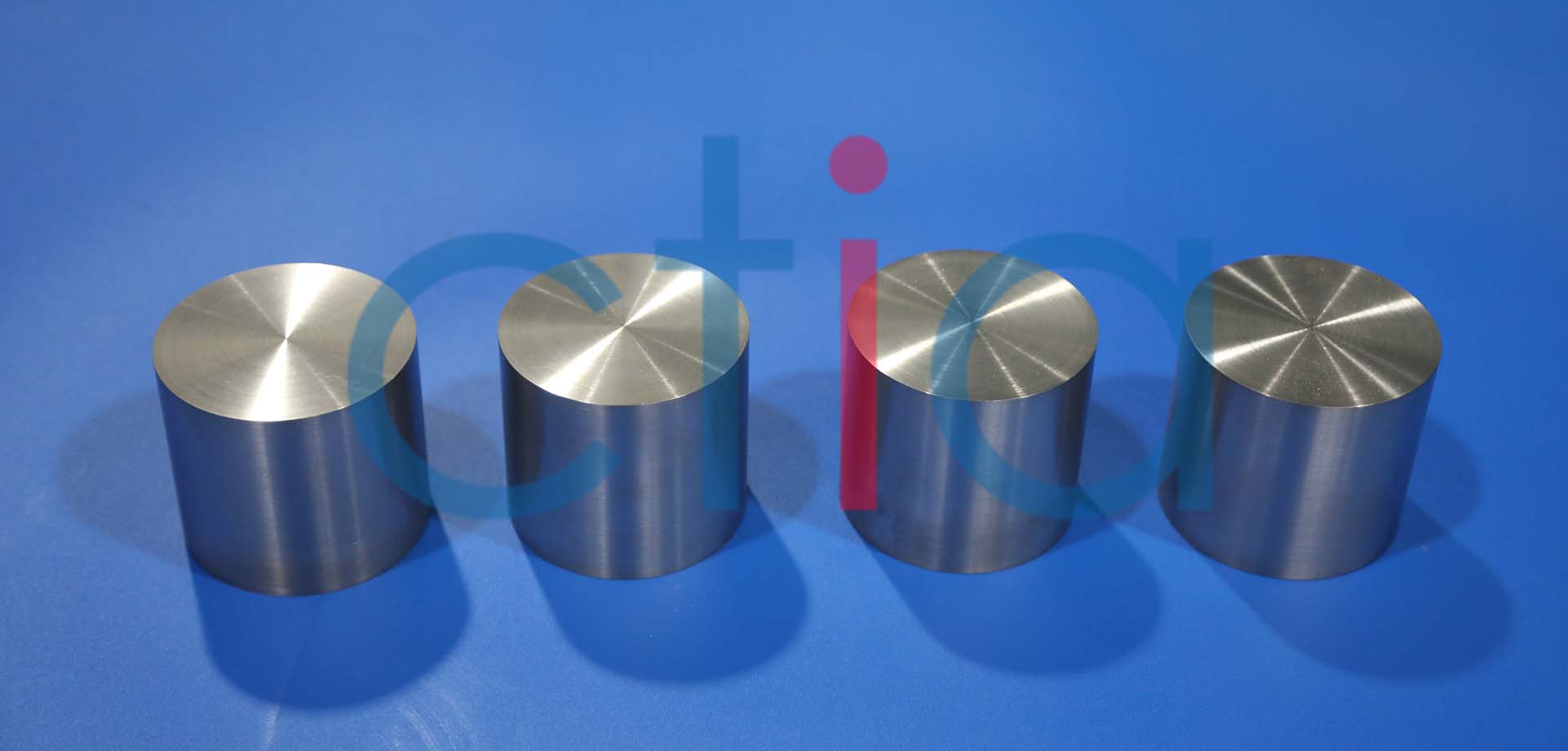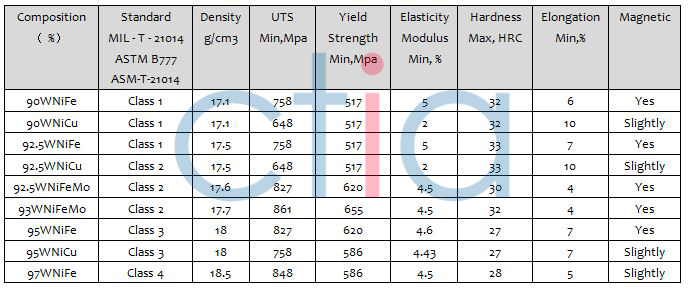Tungsten alloy cylinder is high-density alloy components made primarily from tungsten (typically over 90%), alloyed with nickel, iron, copper, or other metal elements. They are produced via powder metallurgy processes including pressing and sintering, and formed into cylindrical shapes in standard or custom dimensions.
Key Properties
- High Density
With densities typically ranging from 17.0 to 18.5 g/cm³, tungsten alloy cylinders are significantly denser than conventional metals such as steel and copper, providing excellent inertia and kinetic energy characteristics. - High Strength and Hardness
These cylinders offer high mechanical strength and wear resistance, making them suitable for high-speed impact and high-pressure environments. - Outstanding Thermal Stability
With a melting point above 3400°C and a low thermal expansion coefficient, they maintain structural integrity and dimensional stability under extreme temperatures. - Good Machinability
Optimized through alloy design, these cylinders support conventional machining such as turning and grinding. - Excellent Radiation Shielding
They exhibit superior absorption of gamma and X-rays, making them ideal for applications in nuclear medicine and the nuclear industry.
Main Types
- W-Ni-Fe Alloy Cylinders
Balance strength and ductility; suitable for impact-resistant and dynamic load-bearing applications. - W-Ni-Cu Alloy Cylinders
Low or non-magnetic; ideal for use in magnetically sensitive environments such as MRI equipment. - Armor-Piercing Core Cylinders
Designed for kinetic energy weapons in military applications, with high energy transfer efficiency.
Applications
- Aerospace Counterweights
Used in missiles, satellites, and aircraft for counterbalancing and inertial components. - Medical Radiation Shielding
Applied in gamma knife systems, linear accelerators, and other medical devices for radiation protection. - Oil and Geological Exploration
Used in geophysical instruments and heavy-load, pressure-resistant components. - Molds and Tooling
Serve as high-density, high-rigidity parts in stamping molds or wear-resistant components. - Military Ammunition Components
Applied in armor-piercing cores, flywheel rotors, and similar high-performance military hardware.
Customizable Specifications
- Diameter Range: 1 mm – 300 mm
- Length Range: 1 mm – 1000 mm
- Density Grades: 17.0 – 18.5 g/cm³
- Tolerance & Surface Finish: Machining options include turning, grinding, or polishing per drawings
© Copyright
The copyright of the article belongs to CTIA, please do not reprint without permission.
THE END
Like and Share













